Ox eye Daisy – Identification, Uses & Cautions
This post may contain affiliate links. Read my full disclosure here.
Today’s featured plant is the Ox Eye Daisy, Leucanthemum vulgare. It was previously known as Chrysanthemum leucanthemum. We share where to find this wild plant, how to identify it, and how to safely use it for food and medicine.
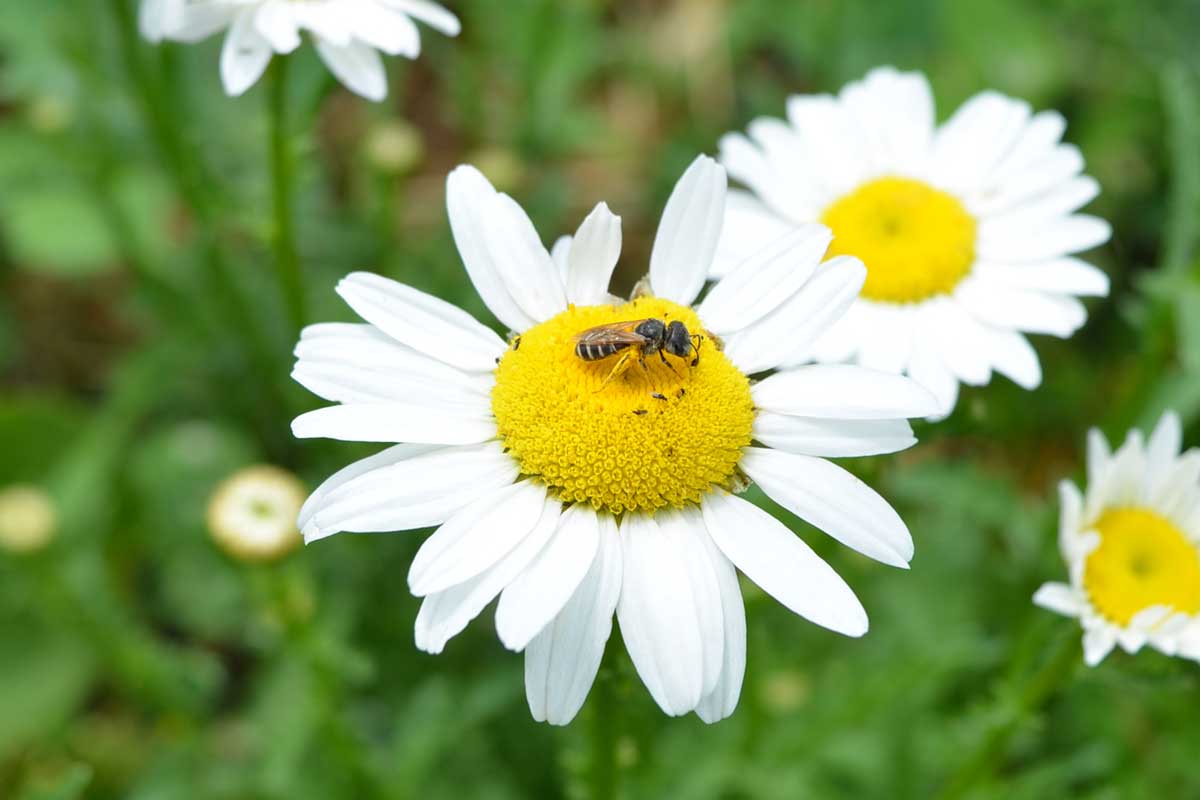
Range and Identification of Ox Eye Daisy
The ox eye daisy is native to Europe, but naturalized in much of the world, including throughout North America. Many areas classify it as a noxious weed because it spreads and adapts so well.
It can grow in wide variety of soils, including poor, heavy soil. It grows along roadsides, in pastures, and in disturbed soil – including my garden. I use them as companion plants, but don’t advise letting them seed out. Deadhead before the flowers mature completely and cultivate around the plant to reduce spreading.
The seeds remain viable for over 40 years, and they can quickly take over an area. They also remain viable after passing through the digestive tract of ruminants, which is another way they can spread.
The plant is a perennial, so it will come back year after year. The roots form a dense mass and can be hard to remove.

Like the common dandelion, the “flower” head is a composite of many tiny flowers clustered together. The ox eye daisy white petalled flower heads have a yellow center. They bloom from May through September, depending on location.
Plants grow from 1-3′ tall, depending on conditions. In poor, dry soils, it’s shorter. In rich soil, it gets taller and floppy.
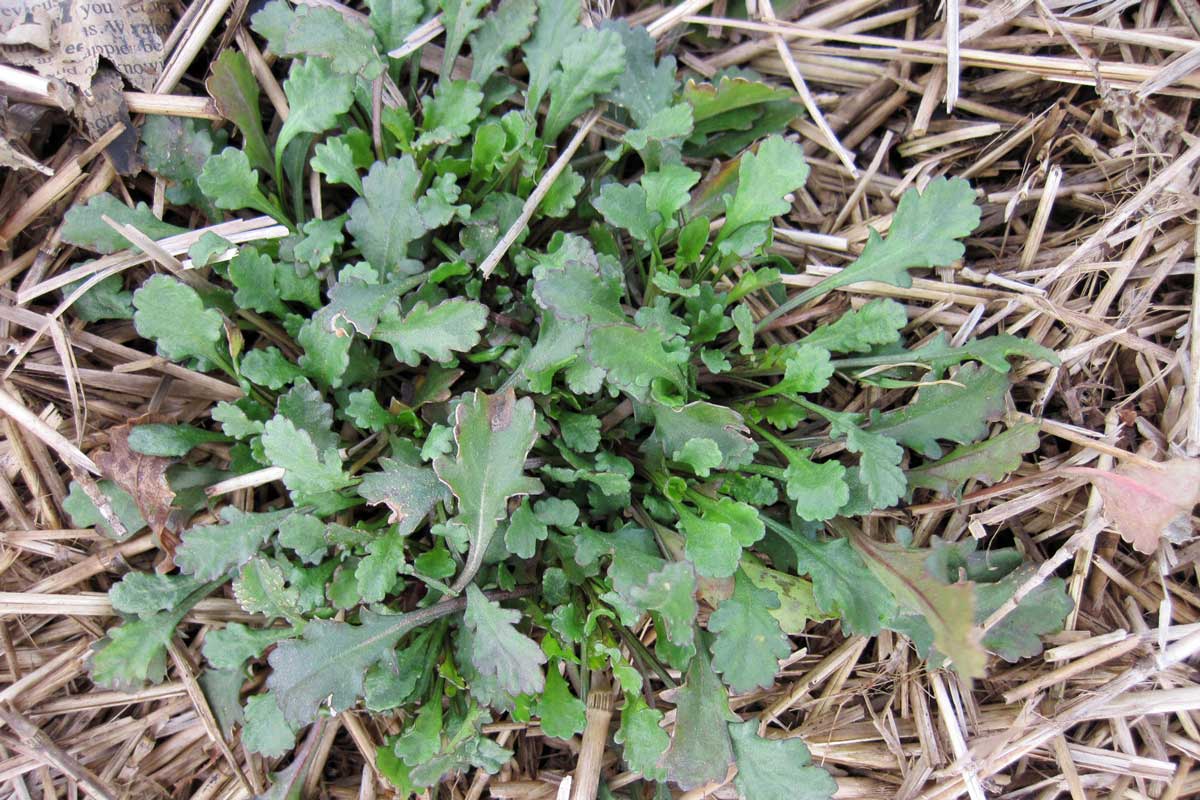
Leaves are thick, dark green and toothed, and can grow up to 6″ long. They form a basal rosette at the base of the plant, and then alternate up the stem. The stems are nearly hairless.

Food for Wildlife and Humans
Many different pollinators enjoy these daisies, including butterflies, bees, and other insects. This is interesting to me, because the plants contain pyrethrum. Pyrethrum is a naturally occurring pesticide that gives the leaves a bitter taste. You can mix the dried flowers with diatomaceous earth to repel fleas.
Sheep and goats will eat ox eye daisy, but cows and pigs avoid it. (reference) It may impart an “off” taste to the milk of lactating animals if eaten.
Young shoots and leaves are edible, but bitter. Use sparingly in salads as a bitter herb and digestive tonic. Pick young, unopened flower buds and a marinate for a caper substitute.
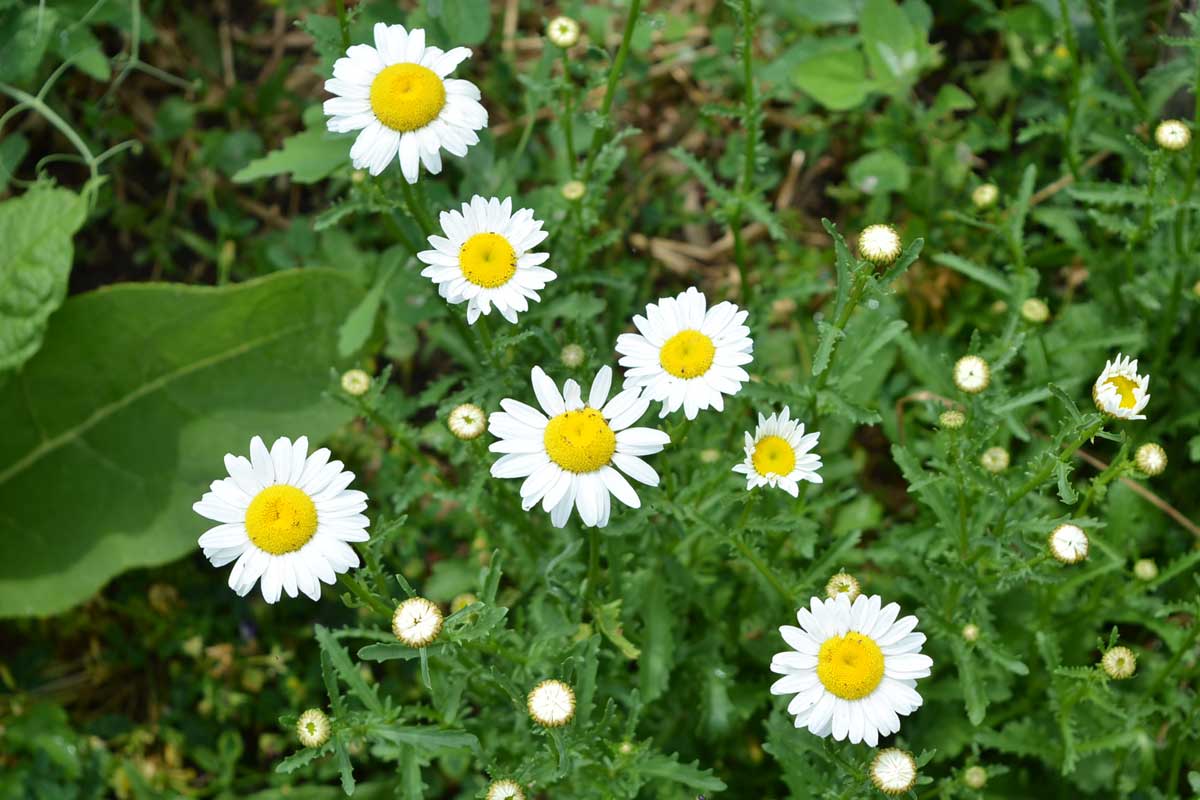
Medicinal Uses
I enjoyed the crazy piles of flowers these plants produce around my yard for years, but didn’t use them much. It wasn’t until I read Herbs Gone Wild that I realized it had more uses.
Diane mentions in Herbs Gone Wild that ox eye daisy flower tea clears up sinus congestion. Add 1 teaspoon dried flowers to 1 cup boiling water. Cover and steep 10 minutes. Strain and sweeten if desired.
Would you like to save this?
Nature’s Herbal states:
The whole plant, and especially the flowers, used as a medicinal herb is antispasmodic, antitussive, diaphoretic, diuretic, emmenagogue, tonic, nervine and vulnerary. Constituents include Essential oils, Tannin, Saponins, Mucilage, Bitter Principle and Flavones. It has much of the same properties of chamomile.
Ox eye daisy flowers are balsamic and make a medicinal infusion for relieving chronic coughs and for bronchial problems. Use the herb in the treatment of whooping cough, asthma and nervous excitability.
The root stops night-sweats of pulmonary consumption. Use externally as a medicinal lotion for wounds, bruises, and ulcers. A distilled water made from the flowers is an effective eye lotion in the treatment of conjunctivitis (pink eye).
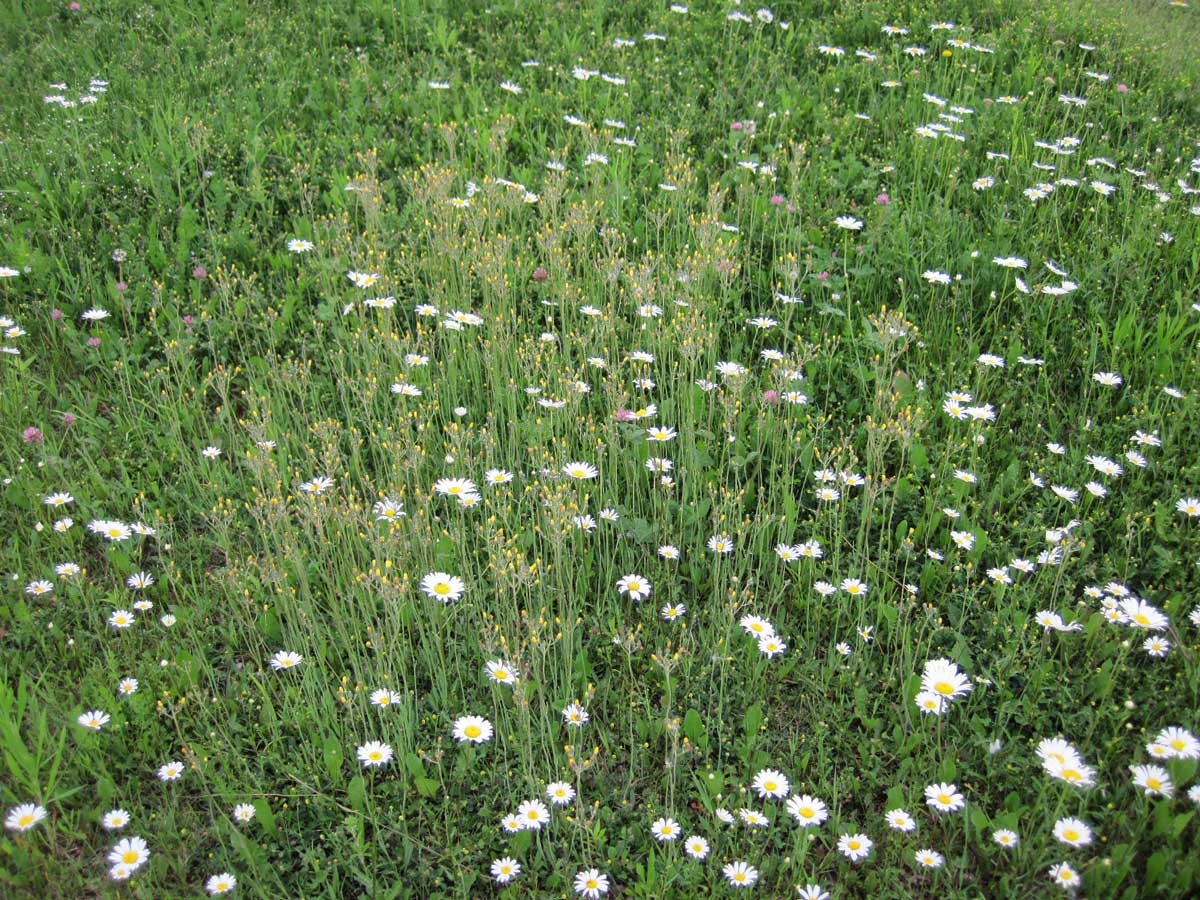
Cautions and Contraindications
Always exercise caution when using wild plants. Make sure you have a positive identification, and test a small amount of the plant before using more.
Ox eye daisy may cause allergic reactions. Those who are allergic to plants in the Asteraceae family are at the greatest risk. This family includes plants such as ragweed, chrysanthemums, marigolds, daisies, and many other plants.
Sensitive individuals may also experience contact dermatitis from the sesquiterpene lactones in the plant. This presents as a red, itchy rash. This is different from the phytophotodermatitis of wild parsnips.
Other Names for Ox Eye Daisy
The oxeye daisy is also known as:
- common daisy
- white daisy
- field daisy
- dog daisy
- poorland flower
- moon daisy
- whiteweed
- moonpenny
The Weekly Weeder Series
This article is part of the Weekly Weeder series, which shares how to use wild plants for food, medicine, and more.
Other popular articles in the series include:

This article is written by Laurie Neverman. Laurie was raised on a small dairy farm in northwest Wisconsin, where she gathered wildflowers from the woods and pastures. She and her family now live in northeast Wisconsin, where they combine intentional plantings and semi-wild areas. Every season is a new opportunity to learn more about working with wild plants.
Originally posted in 2012, last updated in 2024.

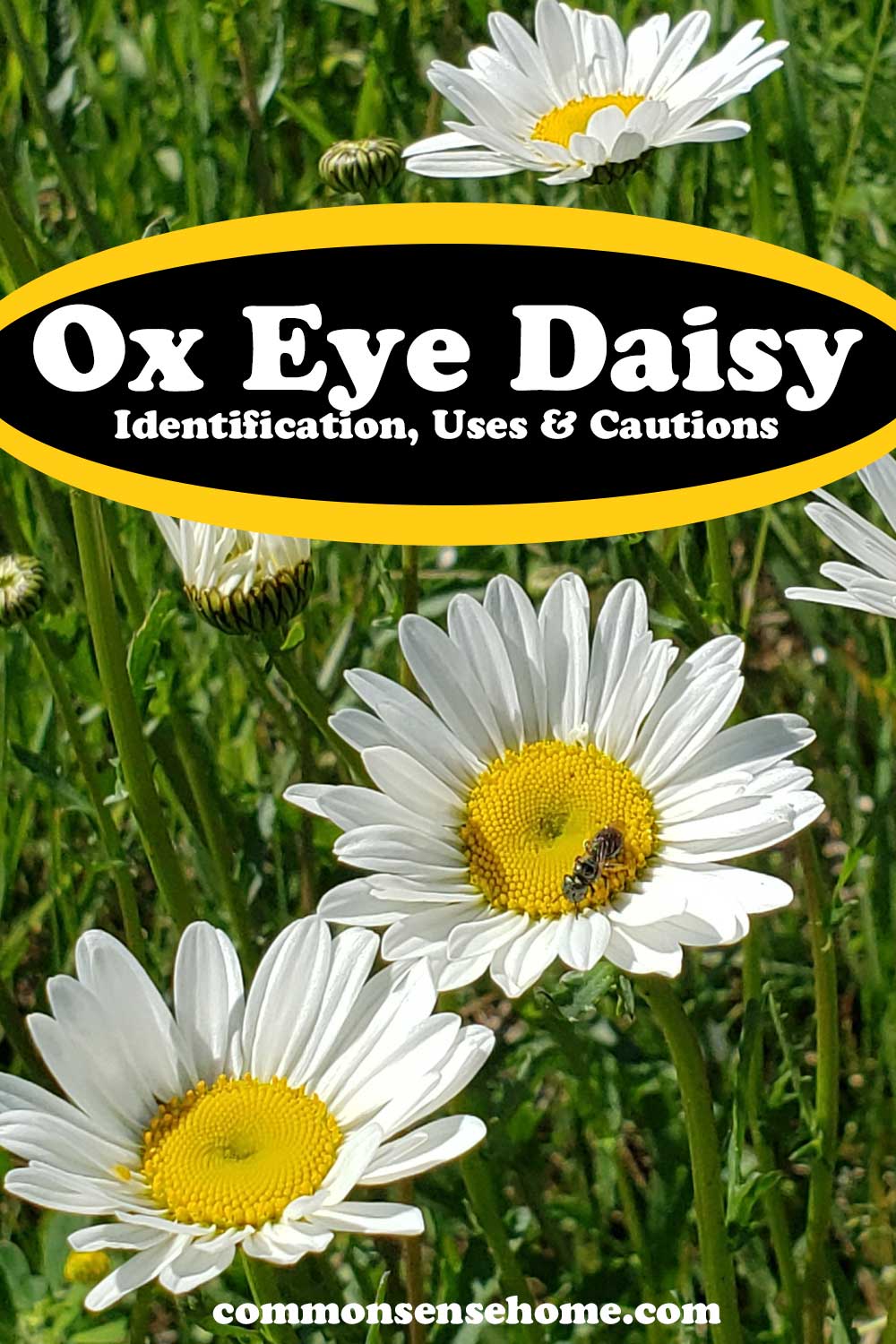
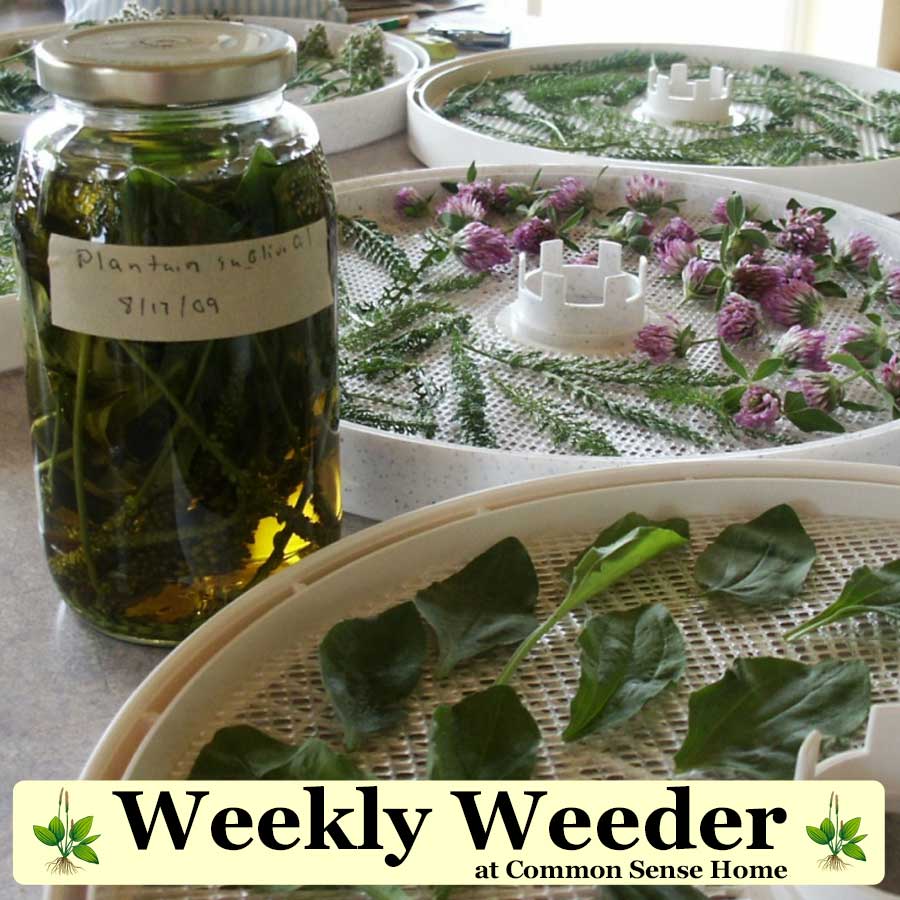




I have made tea out of the dried flower heads to relieve muscle pain after a hard day in the garden. Quite effective.
This is just what I needed as I’ve been trying to identify this plant in my yard. I have a tone of them but few dandelions. Thanks for this whole series!